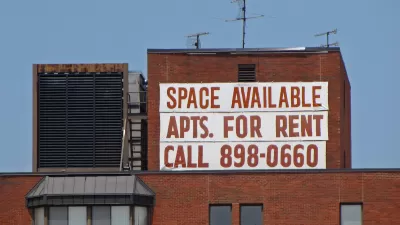An apartment-hunting website that highlights landlords' credibility has not earned their cooperation.

"I've lived in buildings where I never even knew who owned the place," Ronda Kaysen writes in the New York Times. "I only knew the management company, and even that was a little vague."
That experience may be familiar to renters. But while tenants are subject to scrutiny, they're required to trust landlords on faith, Kaysen points out.
In New York, a young company called Rentlogic is attempting to level the playing field by providing tenants with more information during the apartment hunt stage. The searchable site analyzes the history of individual properties, as well as the portfolios of landlords and property managers, to produce a letter grade for every listing.
But backlash from landlords has already prompted New York’s largest real-estate firm to withdraw all its listings after just eight days.
Landlords balked partly because Rentlogic tracks data for seven years — as long as a renter’s credit history — and a building might have been owned or managed by a different company when problems occurred.
To that, Kaysen retorts: "Renters have long been judged by data that does not tell the full story."
A tenant whose ex-husband ruined her credit with a voracious spending habit still has to live with that poor credit score for seven years. Or, if a tenant went to housing court, her name could permanently end up on a tenant-screening database known as the tenant blacklist, even if she prevailed in court.
New York has recently seen efforts to limit or regulate the tenant blacklists, although it is still in use.
FULL STORY: Why Isn’t There a Landlord Blacklist?

Planetizen Federal Action Tracker
A weekly monitor of how Trump’s orders and actions are impacting planners and planning in America.

Congressman Proposes Bill to Rename DC Metro “Trump Train”
The Make Autorail Great Again Act would withhold federal funding to the system until the Washington Metropolitan Area Transit Authority (WMATA), rebrands as the Washington Metropolitan Authority for Greater Access (WMAGA).

The Simple Legislative Tool Transforming Vacant Downtowns
In California, Michigan and Georgia, an easy win is bringing dollars — and delight — back to city centers.

The States Losing Rural Delivery Rooms at an Alarming Pace
In some states, as few as 9% of rural hospitals still deliver babies. As a result, rising pre-term births, no adequate pre-term care and "harrowing" close calls are a growing reality.

The Small South Asian Republic Going all in on EVs
Thanks to one simple policy change less than five years ago, 65% of new cars in this Himalayan country are now electric.

DC Backpedals on Bike Lane Protection, Swaps Barriers for Paint
Citing aesthetic concerns, the city is removing the concrete barriers and flexposts that once separated Arizona Avenue cyclists from motor vehicles.
Urban Design for Planners 1: Software Tools
This six-course series explores essential urban design concepts using open source software and equips planners with the tools they need to participate fully in the urban design process.
Planning for Universal Design
Learn the tools for implementing Universal Design in planning regulations.
Smith Gee Studio
City of Charlotte
City of Camden Redevelopment Agency
City of Astoria
Transportation Research & Education Center (TREC) at Portland State University
US High Speed Rail Association
City of Camden Redevelopment Agency
Municipality of Princeton (NJ)





























